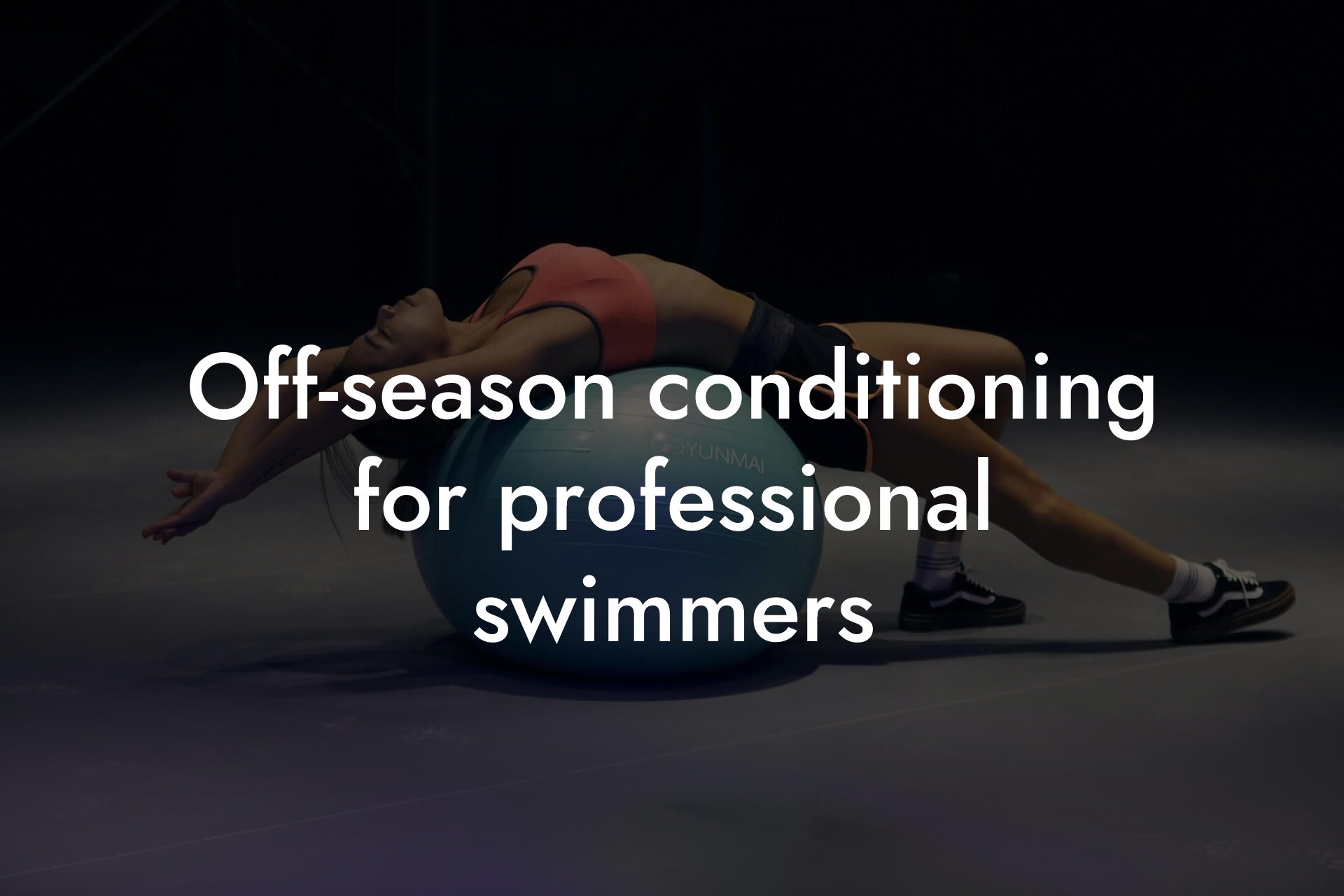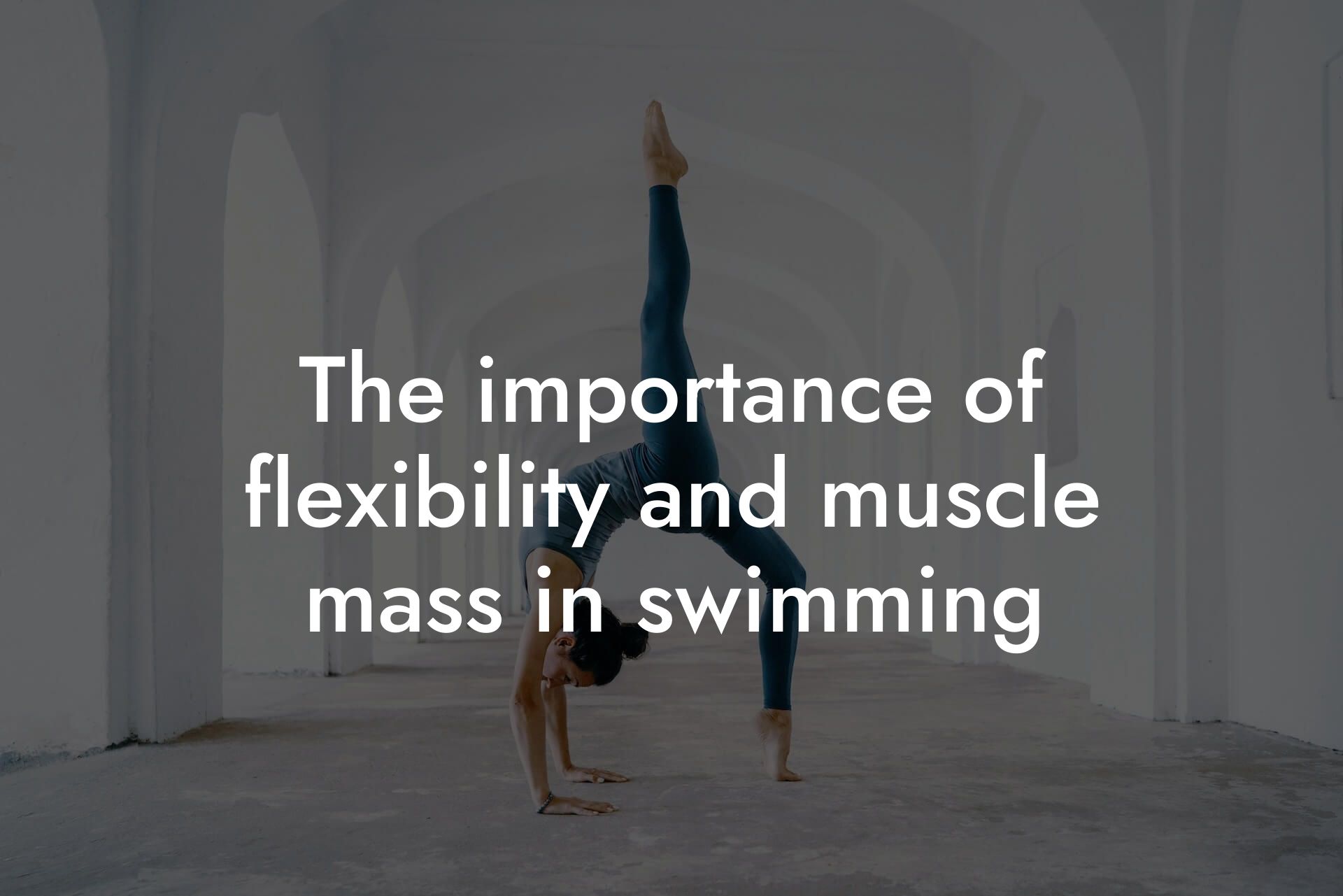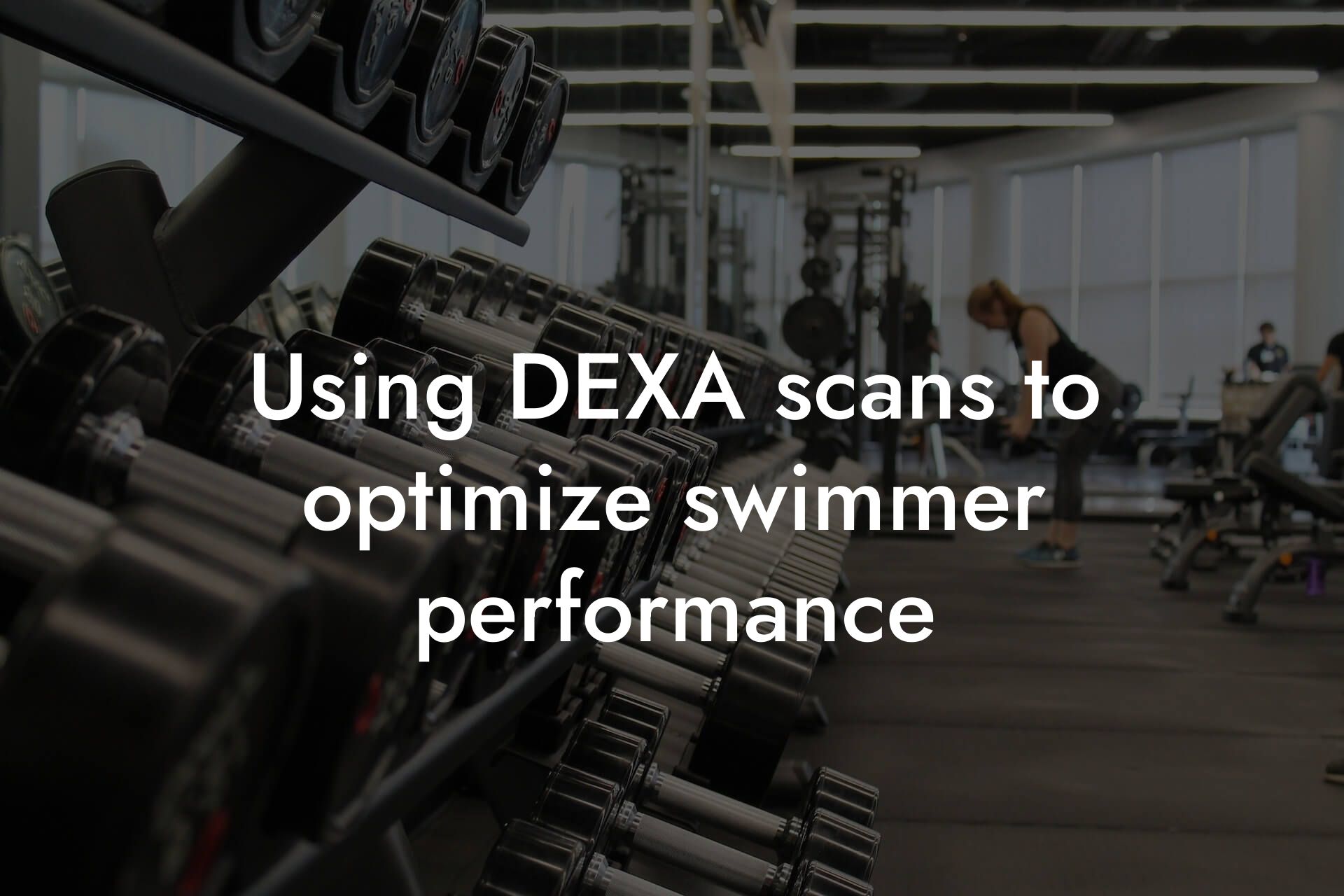As a swimmer, you're likely no stranger to the importance of building endurance and improving your technique in the water. However, incorporating strength training into your regimen can take your performance to the next level. Strength training programs for swimmers are designed to enhance muscle power, increase speed, and reduce the risk of injury. In this article, we'll delve into the benefits of strength training for swimmers and provide a comprehensive guide on how to create an effective strength training program tailored to your needs.
Table of Contents
Benefits of Strength Training for Swimmers
Strength training offers a multitude of benefits for swimmers, including:
• Improved Power and Speed: Building muscular strength enables you to generate more power and speed in the water, allowing you to swim faster and more efficiently.
• Injury Prevention: Strengthening your muscles, particularly in your shoulders, back, and core, can help prevent common swimming injuries such as shoulder impingement and lower back strain.
• Enhanced Endurance: Strength training can improve your muscular endurance, enabling you to maintain a high pace over longer distances.
• Better Body Positioning: Strengthening your core and legs can help you maintain a more efficient body position in the water, reducing drag and improving your overall technique.
Key Muscle Groups for Swimmers
When it comes to strength training for swimmers, it's essential to focus on the following key muscle groups:
• Shoulders: The deltoids, trapezius, and rhomboids are crucial for maintaining good posture and generating power in the water.
• Back: The latissimus dorsi, trapezius, and rhomboids are responsible for maintaining a strong and efficient body position.
• Core: The abdominal muscles, obliques, and lower back muscles are essential for stability, power, and endurance.
• Legs: The quadriceps, hamstrings, and glutes are vital for generating power and speed in the water.
Creating a Strength Training Program for Swimmers
A well-structured strength training program for swimmers should include a combination of exercises that target the key muscle groups mentioned above. Here are some tips to consider:
• Start with Compound Exercises: Focus on exercises that work multiple muscle groups at once, such as squats, deadlifts, and bench press.
• Incorporate Swim-Specific Exercises: Incorporate exercises that mimic swimming movements, such as lat pulldowns, shoulder rotations, and leg press.
• Use Progressive Overload: Gradually increase the weight, reps, or sets over time to continue challenging your muscles and promoting growth.
• Incorporate Plyometrics and Agility Training: Incorporate explosive exercises like box jumps and agility drills to improve power and speed.
Sample Strength Training Program for Swimmers
Here's a sample strength training program for swimmers, broken down into three days per week:
Day 1:
• Squats (3 sets of 8-12 reps)
• Lat Pulldowns (3 sets of 10-15 reps)
• Shoulder Rotations (3 sets of 12-15 reps)
• Plank (3 sets of 30-60 seconds)
Day 2:
• Deadlifts (3 sets of 8-12 reps)
• Bench Press (3 sets of 10-12 reps)
• Leg Press (3 sets of 10-12 reps)
• Russian Twists (3 sets of 12-15 reps)
Day 3:
• Box Jumps (3 sets of 10-12 reps)
• Agility Drills (3 sets of 30-60 seconds)
• Pull-Ups (3 sets of as many reps as possible)
• Leg Extensions (3 sets of 12-15 reps)
Periodization and Progressive Overload
To avoid plateaus and continue making progress, it's essential to incorporate periodization and progressive overload into your strength training program.
• Periodization: Divide your training into specific phases, each lasting 4-6 weeks, with varying focuses on strength, power, and endurance.
• Progressive Overload: Gradually increase the weight, reps, or sets over time to continue challenging your muscles and promoting growth.
Incorporating Strength Training into Your Swim Schedule
To maximize the benefits of strength training, it's essential to incorporate it into your swim schedule in a way that complements your in-water training. Here are some tips:
• Aim for 2-3 Strength Training Sessions per Week: Space out your strength training sessions to allow for adequate recovery time.
• Focus on Strength Training during the Off-Season: Use the off-season to focus on building strength and power, and then transition to more swim-specific training during the competitive season.
• Listen to Your Body: Pay attention to your body and take rest days as needed. It's better to err on the side of caution and allow for adequate recovery time.
Incorporating a well-structured strength training program into your swim regimen can have a significant impact on your performance in the water. By focusing on the key muscle groups, incorporating swim-specific exercises, and periodizing your training, you can improve your power, speed, and endurance. Remember to listen to your body, incorporate progressive overload, and make adjustments as needed. With dedication and consistency, you can take your swimming to the next level.
At Tano Performance Group, we understand the importance of a comprehensive approach to fitness. Our DEXA machine provides a complete body assessment, giving you the information you need to optimize your training and take your performance to the next level. Contact us today to learn more about how our services can help you achieve your fitness goals.
Frequently Asked Questions
What is strength training for swimmers, and why is it important?
Strength training for swimmers is a type of exercise program that focuses on building muscular strength and endurance to improve swimming performance. It's essential because swimming is a sport that requires a high level of strength, power, and endurance. By incorporating strength training into their routine, swimmers can increase their speed, efficiency, and overall performance in the water.
How does strength training benefit swimmers?
Strength training benefits swimmers in several ways, including increased power, speed, and endurance. It also helps improve technique, reduces the risk of injury, and enhances overall athletic performance. Additionally, strength training can help swimmers build confidence and mental toughness, which are essential for competing at a high level.
What are the key components of a strength training program for swimmers?
A well-structured strength training program for swimmers should include exercises that target the muscles used in swimming, such as the shoulders, back, arms, legs, and core. It should also include a mix of exercises that focus on strength, power, and endurance, as well as exercises that improve flexibility and mobility.
How often should swimmers strength train?
The frequency of strength training for swimmers depends on their individual goals and needs. Generally, swimmers should aim to strength train 2-3 times per week, with at least one day of rest in between. This allows for adequate recovery time and helps prevent overtraining.
What types of exercises should swimmers include in their strength training program?
Swimmers should include a variety of exercises in their strength training program, such as squats, lunges, deadlifts, bench press, rows, and leg press. They should also include exercises that target the core muscles, such as planks, Russian twists, and leg raises. Additionally, swimmers can benefit from plyometric exercises, such as box jumps and depth jumps, to improve power and explosiveness.
How can swimmers incorporate strength training into their busy schedules?
Swimmers can incorporate strength training into their busy schedules by prioritizing their workouts and making them a non-negotiable part of their daily routine. They can also try to find exercises that can be done in a short amount of time, such as bodyweight exercises or resistance band exercises, which can be done at home or on the go.
What are some common mistakes swimmers make when it comes to strength training?
Some common mistakes swimmers make when it comes to strength training include not incorporating enough variety in their workouts, not focusing on exercises that target the core and legs, and not allowing for adequate recovery time. Swimmers should also avoid overtraining, which can lead to fatigue, injury, and decreased performance.
How can swimmers measure the effectiveness of their strength training program?
Swimmers can measure the effectiveness of their strength training program by tracking their progress over time. This can be done by monitoring their strength gains, improvements in swimming times, and increases in endurance. Swimmers can also use metrics such as heart rate and lactate threshold to measure their progress.
What role does nutrition play in a strength training program for swimmers?
Nutrition plays a critical role in a strength training program for swimmers. Swimmers need to fuel their bodies with the right foods to support muscle growth and recovery. This includes consuming a balanced diet that is high in protein, complex carbohydrates, and healthy fats. Swimmers should also stay hydrated by drinking plenty of water before, during, and after their workouts.
How can swimmers stay motivated and consistent with their strength training program?
Swimmers can stay motivated and consistent with their strength training program by setting specific, measurable, and achievable goals. They should also find a workout buddy or join a training group to provide accountability and support. Additionally, swimmers can reward themselves for reaching their goals and celebrate their progress along the way.
What are some common injuries that swimmers may experience, and how can strength training help prevent them?
Common injuries that swimmers may experience include shoulder injuries, knee injuries, and lower back injuries. Strength training can help prevent these injuries by building strength and endurance in the muscles used in swimming. It can also help improve technique and reduce the risk of overuse injuries.
How can swimmers modify their strength training program to accommodate injuries or limitations?
Swimmers can modify their strength training program to accommodate injuries or limitations by working with a trainer or coach to develop a customized program. They can also substitute exercises that are low-impact or non-weightbearing, such as swimming or cycling, to reduce the risk of further injury.
What role does flexibility and mobility play in a strength training program for swimmers?
Flexibility and mobility play a critical role in a strength training program for swimmers. Swimmers need to have good flexibility and mobility to maintain proper technique and reduce the risk of injury. This can be achieved through exercises such as stretching, foam rolling, and dynamic warm-ups.
How can swimmers incorporate active recovery into their strength training program?
Swimmers can incorporate active recovery into their strength training program by including low-intensity exercises such as yoga, Pilates, or light swimming. This can help reduce muscle soreness and improve recovery time.
What are some common misconceptions about strength training for swimmers?
Some common misconceptions about strength training for swimmers include the idea that strength training will make them bulky or slow, or that it's not necessary for swimming performance. However, research has shown that strength training can improve swimming performance and reduce the risk of injury.
How can swimmers balance their strength training program with their swimming training?
Swimmers can balance their strength training program with their swimming training by prioritizing their workouts and making sure they have adequate recovery time. They should also communicate with their coach or trainer to ensure that their strength training program is aligned with their swimming goals.
What are some benefits of working with a personal trainer or coach for strength training?
Working with a personal trainer or coach can provide swimmers with customized guidance and support, help them stay motivated and accountable, and ensure that they are using proper technique and form. A trainer or coach can also help swimmers develop a strength training program that is tailored to their specific needs and goals.
How can swimmers incorporate strength training into their off-season training?
Swimmers can incorporate strength training into their off-season training by focusing on exercises that target their weaknesses and improving their overall strength and endurance. This can help them build a strong foundation for their swimming training and improve their performance when they return to the water.
What are some common mistakes swimmers make when it comes to strength training in the off-season?
Some common mistakes swimmers make when it comes to strength training in the off-season include not incorporating enough variety in their workouts, not focusing on exercises that target the core and legs, and not allowing for adequate recovery time. Swimmers should also avoid overtraining, which can lead to fatigue, injury, and decreased performance.
How can swimmers stay motivated and engaged with their strength training program during the off-season?
Swimmers can stay motivated and engaged with their strength training program during the off-season by setting specific, measurable, and achievable goals, finding a workout buddy or joining a training group, and rewarding themselves for reaching their goals. They should also focus on the benefits of strength training, such as improved performance and reduced risk of injury.
Here are some related articles you might love...
- Off-season conditioning for professional swimmers
- The importance of flexibility and muscle mass in swimming
- Using DEXA scans to optimize swimmer performance
- Bone density and its impact on injury prevention in swimming
- Recovery techniques for swimmers after intense training
- Balancing strength and endurance in swimming
- Nutrition strategies for swimmers to maintain energy levels
- The role of body composition in swimming speed and endurance
- Reducing body fat for better buoyancy and speed in swimming
Zak Faulkner
Zak Faulkner is a leading authority in the realm of physical health and body composition analysis, with over 15 years of experience helping professionals optimise their fitness and well-being. As one the experts behind Tano Performance Group, Zak has dedicated his career to providing in-depth, science-backed insights that empower clients to elevate their physical performance and overall health.
With extensive knowledge of DEXA technology, Zak specializes in delivering comprehensive body assessments that offer precise data on body fat, muscle mass, bone density, and overall physique. His expertise enables individuals to make informed decisions and achieve their fitness goals with accuracy and confidence. Zak’s approach is rooted in a deep understanding of human physiology, combined with a passion for helping clients unlock their full potential through personalised strategies.
Over the years, Zak has earned a reputation for his commitment to excellence, precision, and client-focused service. His guidance is trusted by top professionals who demand the best when it comes to their health. Whether advising on fitness programs, nutritional strategies, or long-term wellness plans, Zak Faulkner’s insights are a valuable resource for anyone serious about taking their health and fitness to the next level.
At Tano Performance Group, Zak continues to lead our Content Team revolutionising how professionals approach their physical health, offering unparalleled expertise that drives real results.




